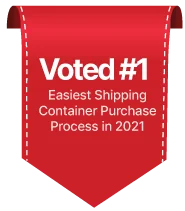Introduction to connecting shipping containers with a covered walkway
Are you wondering how to connect shipping containers? If so, you are in the right place. Read on to learn how to connect two containers with a covered walkway.
You will also learn how to prepare the site and what types of modifications need to be made to get the job done.
The following article will explain how to connect two shipping containers with a covered walkway. Listed below are a few tips to get you started:
Joining two shipping containers with a covered walkway
When you’re looking to build an addition to your business, joining two shipping containers is a great way to add additional space and save money. These versatile buildings are lightweight, modular, and easy to transport.
They can be joined together to create almost any size of space you need. These shipping containers are usually shipped in modules and can be placed side by side on the construction site. Then, they can be connected to form any desired size. Some people in Massachusetts, Michigan, Minnesota, and Mississippi use this to save space.
Before constructing the enclosure, make sure you have the right site and the right equipment. First, make sure the foundation is level and compact. Then, make sure the first shipping container is straight and level. Then, guide the second unit into position and measure the space between the two containers.
If you need help preparing your site for the installation, check out our articles on shipping container installation. Make sure your site is prepared for the installation, but you can also learn how to build a pedestrian walkway in a day or two.
Preparing the site
Before connecting shipping containers to other buildings, prepare the site to connect them. A level site with no debris is essential.
A poorly prepared site can damage the shipping container and the items inside. It may also damage the surrounding landscape. Make sure to prepare the site thoroughly before beginning construction.
Listed below are the steps to prepare the site to connect shipping containers. Read these instructions carefully and follow them exactly. This way, you will be able to build your new structure on a level surface.
Prepare the site for the shipping containers. The first step in this process is to determine where the containers will go. Check for adequate space, including enough room to open and close the doors. Place cones to mark the area.
Be sure to avoid blocking fire exits. Also, ensure that the location of the shipping containers is accessible. When you have chosen the site, prepare it for construction. Ensure that it is safe and accessible for visitors and employees.
The shipping container should sit on a level surface. It should have been supported at four corners. Make sure these supports are level and secure before delivering them. Use a level to make sure the supports are level.
If the supports are not level, use an excavating machine to make the site level. It is essential that the site be level before putting the shipping containers on it. Alternatively, you can hire a professional to do this task for you.
During preparation, you should prepare the site for connecting shipping containers. Ensure that the ground is firm and compacted enough to support the frame of the container.
If the site is slanted or rough, use gravel or small stones to stabilize it. If the site is flat, use a bobcat to compact it.
Make sure that the area is level and compacted to ensure the shipping containers do not move around or sink below the ground.
Modifications needed
If you’re considering shipping your goods overseas, you may be wondering what type of modifications will be needed to connect your two containers. This process will require modifications to the walls and other structural elements of the shipping containers.
For example, open-side containers have large doorways, but standard shipping containers have interior walls that may need to be cut away to create a doorway or a fully open space. You can also install bracing columns to help support the structure if necessary.
There are many types of structural modifications available to fit the needs of a variety of users. These modifications include the installation of windows and personnel doors, electrical and HVAC systems, and exterior stairs.
The result of these changes turns a shipping container into a functional system. Many companies have discovered that these containers can be used for offices, classrooms, restaurants, and even public facilities.
In addition, they can serve as restrooms and car storage units. You can even connect an HVAC system to convert the shipping container into a living space.
For the most convenient modifications, the shipping containers can be equipped with HVAC units that can control both the temperature and humidity inside. These HVAC units include window air conditioners, ducts, louver vents, and rooftop turbine vents.
Modifications also allow you to add built-in insulation for optimal climate control and equipment operation. You can even add shelves and a locking mechanism to protect valuable goods from thieves. You can also install a security arm to secure your storage container.
In addition to the structural modifications, your container home site should be graded for utilities and maintenance. You’ll need to install septic systems and water and may need to dig some trenches to run a line.
Additionally, you’ll need to add doors and windows. Make sure you consult with an engineer when it comes to modifying a shipping container. If you’re not sure about the structural integrity of the shipping container, you can opt for pre-modified homes.
When connecting two shipping containers, you'll need to make interior support columns. This will ensure the structural integrity of the unit, but it also requires additional space for the construction.
Once the two shipping containers are joined, their roofs will theoretically be joined, but the weight will be distributed unevenly.
Interior support columns prevent the roof from buckling or settling. This is a crucial aspect of shipping container construction. However, it’s an incredibly time-consuming and expensive process.






 147 People have requested shipping container pricing this week through TheShip
147 People have requested shipping container pricing this week through TheShip